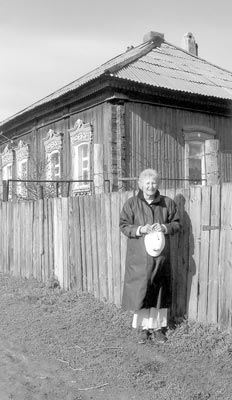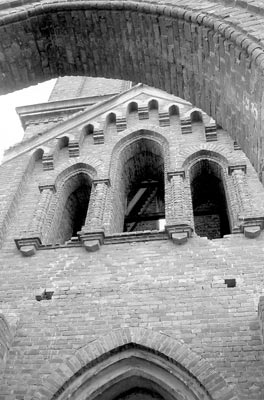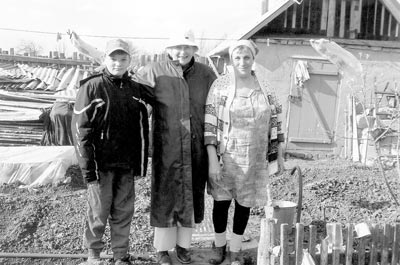My father’s town
A lifelong dream of mine was to see the town where my father was born: the Volga-German colony of Reinhard in Russia.
In November ’06, I attended a meeting of the Sarasota, Florida, ITN travel club, Offbeat Travelers, and one of the members, Pat, said she and her daughter were booked on an April-May ’07 cruise from Rostov-on-Don north on the Volga River to Moscow. I asked Pat if she and Susie would be willing to go with me in a car from Saratov to try to find my father’s birthplace and she replied, “Yes!”
At home, I called Grand Circle Travel (Boston, MA; 800/959-0405, www.gct.com), confirmed the port call at Saratov, then booked the last single cabin on the river cruise “Tatars, Cossacks and the Golden Ring.”
On the cruise, two days before the Rossia arrived in Saratov, the program director for our group phoned Grand Circle’s office in Saratov to learn if it were possible to drive to Reinhard, now known as Oshinovka, during our 3-hour port call.
Later that day she told me the arrangements had been made. In my cabin, I shed tears for unknown cousins who lived and died in Reinhard, then went to find Pat and Susie to tell them, “We’re on!”
I paid in rubles about $135 for the excursion. (I ended up tipping the guide and driver in dollars because I didn’t have enough rubles.)
We docked at Saratov at 3 p.m. on Saturday as planned. Helen Raygorodskaya (e-mail doch77@inbox.ru), our guide/translator, and Maxim, our driver, were waiting on shore. Helen is a vivacious young woman who speaks English well. She lives in Saratov, the center of Volga-German settlements.
After introductions all around, we piled into a 4-door Lada and whipped through Saratov streets and into the countryside. Soon we arrived at Oshinovka, one of many German colonies fostered by Empress Catherine the Great. Founded in 1766, this colony once was home to 2,200 people but now has maybe 100 residents. My father was born there and came to the U.S. at age seven. He had described the village to me and drawn a map.
I took photos of a typical wooden house, then asked Helen if I could fill a small jar with well water. (My church gathers water from around the globe for the baptismal font.)
Helen opened a tall wooden gate. (Dad had described such a gate and the palisade that surrounded each house and also enclosed the barn and outbuildings.) A woman and her preteen son were in the garden and Helen translated my request. The woman reached down, turned the spigot and filled my jar.
Through Helen, I told the woman that my father was born their village and that its name had been “Reinhard.”
“Da,” the woman responded.
I was elated at the name confirmation. I was actually at my father’s birthplace! I felt overwhelmed.
She then volunteered the village name “Reinwald” and pointed to the west.
“Da,” I confirmed, surprised that she knew the German names for these places. I then offered, “Schulz,” my grandmother’s birthplace, located between the two villages.
The woman replied, “Da.”
I asked about the church. The woman said there was none, but the son added that there was one in the next village. Our map showed that to be Schaefer.
Off we went to the village, a short distance east. It was a larger village with a school and some paved streets. We found the brick walls of a large Gothic church — no roof, no steeple and no window glass, but the plastered interior was intact. (Dad had said they attended church in a nearby village.)
More photos, then back to the car for the dash back to Saratov and the ship. We arrived just as the last bus carrying cruisers touring locally arrived.
It had been a wonderful, dream-fulfilling three hours.
IDA CUTHBERTSON
Sarasota, FL



